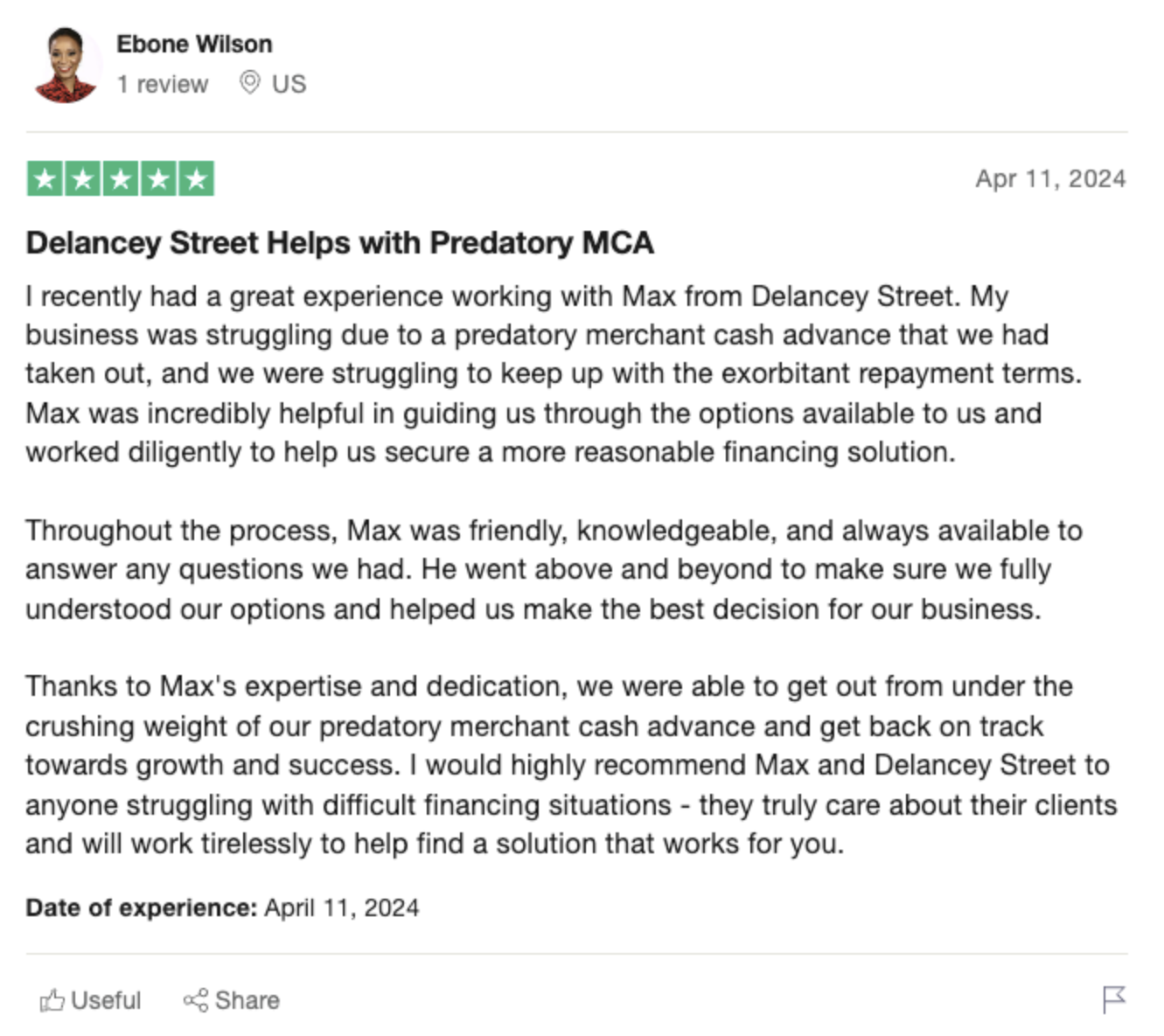Merchant Cash Advance Debt: The Bankruptcy Escape Hatch
You took out a merchant cash advance (MCA) to give your business a boost, but now – those daily or weekly debits are bleeding you dry. The debt is piling up, and you’re drowning in interest and fees. Sound familiar? Well, you’re not alone – and there may be a way out.In this no-BS guide, we’ll rip the veil off MCA defaults. We’ll explore the gritty consequences, the legal landmines to avoid, and the savvy strategies for damage control. It’s not pretty, but knowledge is power – so strap in.
The MCA Debt Spiral: How It Starts
An MCA seems so simple at first: you get an upfront lump sum in exchange for a slice of your future receivables. No biggie, right? But then the cash flow crunch hits. Those constant debits start cutting deep, making it impossible to keep up.Before you know it, you’re in default – and the MCA company’s claws are out. They can pursue aggressive collection tactics, damage your credit, and even freeze your assets. It’s a nightmare scenario that can suffocate your business.So, what’s the escape route? Well, bankruptcy may be an option – but not all types are created equal when it comes to ditching that MCA monkey on your back.
Chapter 7: The Liquidation Solution?
For some businesses drowning in MCA debt, Chapter 7 bankruptcy offers a fresh start – but at a steep price. By filing for Chapter 7, you’re essentially throwing in the towel: your company gets liquidated, assets get sold off, and eligible debts (including MCAs) get discharged. The upside? That MCA debt is gone for good. The downside? Your business is too – you’ll have to close up shop. So, Chapter 7 is really a last resort for companies with no viability left.For most businesses still kicking, though, Chapter 7 is off the table. You need a way to restructure that MCA debt while keeping operations alive. That’s where Chapter 11 comes in.
Chapter 11: The Reorganization Gambit
If your business has a fighting chance but MCA payments are the anchor dragging you down, Chapter 11 bankruptcy could be the play. By filing for Chapter 11, you can temporarily halt collections while you reorganize your debts – including that pesky MCA. The goal? Negotiate new repayment terms that your cash flow can actually handle. You might extend the payback period, reduce the interest rate, or even get part of the debt forgiven.But don’t think Chapter 11 is a cakewalk. It’s an expensive, complex process that requires jumping through tons of legal hoops. You’ll need a skilled bankruptcy attorney to guide you – and there’s no guarantee the MCA company will play ball.Plus, even if you do manage to restructure that MCA debt, it’ll stay on your credit report as “included in bankruptcy” for 7-10 years. Not ideal, but better than going belly-up.

The Chapter 13 Gambit for Sole Proprietors
What if you’re a sole proprietor, and that MCA debt is mixed in with your personal liabilities? In that case, Chapter 13 bankruptcy could be your saving grace.With a Chapter 13 filing, you can lump all eligible debts (business and personal) into a court-approved repayment plan spanning 3-5 years. During that time, you’re protected from collections – and any remaining debt gets discharged once the plan is complete. The catch? You’ll need enough steady income to make those court-ordered payments every month. If your business is floundering, Chapter 13 might not fly. But for a sole prop with a viable operation and manageable debt load, it could be the fresh start you need.
When Bankruptcy Isn’t an Option: Negotiation Tactics
Let’s say bankruptcy is off the table – maybe you can’t afford it, or perhaps you’re determined to tough it out. In that case, your best move is to open a dialogue with the MCA company ASAP.Believe it or not, they may be willing to renegotiate those brutal terms before you default. MCA lenders would rather get paid something than nothing, after all. But you’ll need to make a compelling case for why you need temporary relief or a longer runway.If you’ve already defaulted, don’t stick your head in the sand – that will only make things worse. As soon as you miss payments, pick up the phone and start negotiating. Explain your situation, propose a viable repayment plan, and be prepared to make some concessions (like adding personal guarantees).The key? Be proactive, transparent, and have a solid plan. MCA companies are more likely to work with you if they see you’re acting in good faith – not just stalling for time.
Preventing Future MCA Meltdowns
Hindsight is 20/20, but there are some red flags you can watch for next time before signing on the dotted line:
- Excessive fees or factor rates over 1.4 (translating to effective APRs over 50%!)
- Cognovit notes or expansive personal guarantees that put your assets at risk
- Vague default definitions or lack of cure periods to remedy missed payments
- Minimal underwriting standards for your business’s financials and ability to repay
If any of those apply, think twice – or better yet, look into alternative financing options with more reasonable terms. An ounce of prevention is worth a pound of cure when it comes to dodging the MCA debt trap.

The Takeaway: Know Your Options, Avoid the Pitfalls
At the end of the day, defaulting on an MCA is no joke. The consequences can be swift and severe for your business’s survival. Bankruptcy may offer a fresh start, but it’s no magic wand – and it comes with its own baggage.The smartest move? Steer clear of sketchy MCA deals from the jump. But if you’re already stuck in the quicksand, take action immediately. Explore all your options, from bankruptcy to negotiation. Get expert legal advice. And most importantly, be proactive – the longer you wait, the deeper that debt hole gets.







